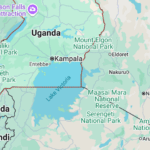Hidden Biological Risks in Medical Waste: Why Proper Incineration Matters More Than Ever
Medical waste has always posed visible hazards―syringes, sharps, infectious dressings―but beneath the surface lies an invisible and far more complex threat: hidden biological risks. In an age of global mobility and post-pandemic sensitivity, the microbial and biochemical dangers inside untreated healthcare waste demand renewed attention.
1. The Unseen Threats in Medical Waste
Hospitals, laboratories, and clinics produce tons of contaminated materials daily. Beyond bloodborne pathogens and bacteria, medical waste may carry viral RNA fragments, antibiotic-resistant genes, and microplastic residues. These contaminants can persist in the environment long after disposal, spreading through air, soil, and water.
Improper handling―open dumping, low-temperature burning, or uncontrolled landfilling―turns waste sites into microbial breeding grounds. Antibiotic residues from expired drugs or IV fluids create conditions that accelerate antimicrobial resistance (AMR), a global health crisis that already kills millions annually.
2. Post-Pandemic Waste Pressure
The COVID-19 pandemic multiplied medical waste output by up to tenfold in some regions. Masks, test kits, and PPE added new categories of biohazards. According to WHO reports, 30% of global healthcare waste still remains untreated or poorly managed, especially in developing regions where infrastructure lags behind need.
This growing pressure highlights a dangerous imbalance: more waste, but not enough capacity to treat it safely and sustainably.
3. The Role of Advanced Incineration
High-temperature, multi-chamber incineration remains the most reliable and scalable method to neutralize complex medical waste. Modern systems achieve complete pathogen destruction, emission control, and energy recovery within compact and containerized configurations.
Solutions such as industrial-grade incinerators for large-scale waste disposal and custom-made medical waste incinerators for hospitals and clinics ensure consistent thermal efficiency and regulatory compliance. For facilities facing spatial or logistical limits, containerized incinerators for industries enable safe operations even in remote or emergency environments.
4. Beyond Destruction: Integrating Safe Systems
Next-generation incineration technology now combines automated feeding, PLC control, and secondary gas treatment to eliminate emissions and reduce human exposure. These systems integrate with waste shredders to enhance throughput and lower costs―see applications of waste shredders for practical examples.
By embedding sensors and digital monitoring, operators can verify combustion data, detect irregularities in temperature curves, and guarantee full pathogen destruction cycles.
5. The Road Ahead
Hidden biological risks within medical waste represent not just an environmental challenge but a systemic health vulnerability. True containment requires technical precision and continuous monitoring, not short-term disposal.
Global health security begins with responsible waste treatment. Hospitals, NGOs, and governments must invest in scalable, data-driven solutions such as advanced automatic incinerators for medical waste sterilization―technologies that align safety, sustainability, and accountability.
About HICLOVER
HICLOVER specializes in high-efficiency medical, animal, and industrial waste incineration systems. With projects delivered across Africa, Asia, and the Middle East, the company provides containerized, PLC-controlled, and fully automated waste treatment equipment for hospitals, camps, and industries worldwide.
Visit www.hiclover.com or email sales@hiclover.com for tailored incineration solutions that safeguard people and the planet.







